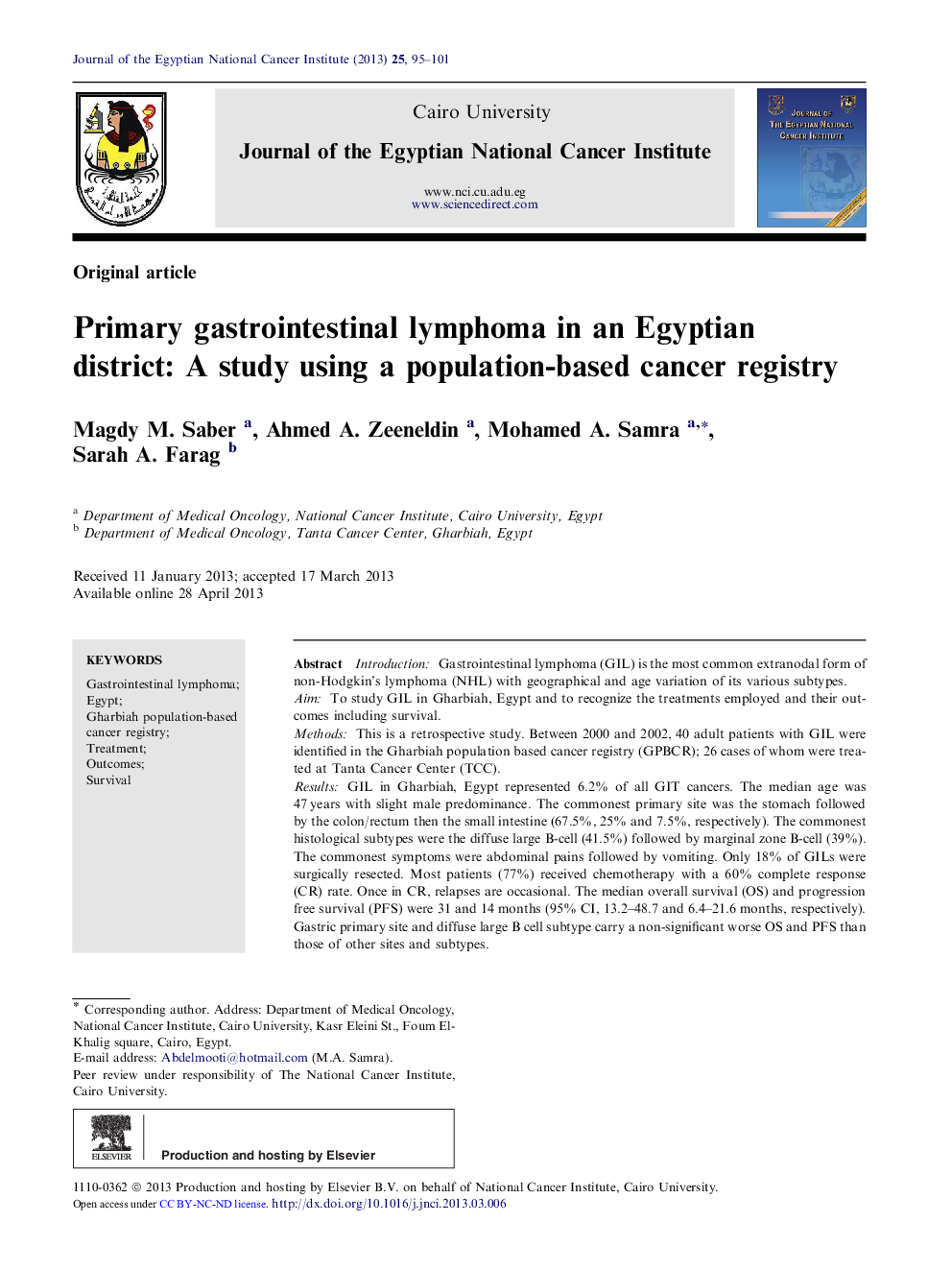| Article ID | Journal | Published Year | Pages | File Type |
|---|---|---|---|---|
| 3989090 | Journal of the Egyptian National Cancer Institute | 2013 | 7 Pages |
IntroductionGastrointestinal lymphoma (GIL) is the most common extranodal form of non-Hodgkin’s lymphoma (NHL) with geographical and age variation of its various subtypes.AimTo study GIL in Gharbiah, Egypt and to recognize the treatments employed and their outcomes including survival.MethodsThis is a retrospective study. Between 2000 and 2002, 40 adult patients with GIL were identified in the Gharbiah population based cancer registry (GPBCR); 26 cases of whom were treated at Tanta Cancer Center (TCC).ResultsGIL in Gharbiah, Egypt represented 6.2% of all GIT cancers. The median age was 47 years with slight male predominance. The commonest primary site was the stomach followed by the colon/rectum then the small intestine (67.5%, 25% and 7.5%, respectively). The commonest histological subtypes were the diffuse large B-cell (41.5%) followed by marginal zone B-cell (39%). The commonest symptoms were abdominal pains followed by vomiting. Only 18% of GILs were surgically resected. Most patients (77%) received chemotherapy with a 60% complete response (CR) rate. Once in CR, relapses are occasional. The median overall survival (OS) and progression free survival (PFS) were 31 and 14 months (95% CI, 13.2–48.7 and 6.4–21.6 months, respectively). Gastric primary site and diffuse large B cell subtype carry a non-significant worse OS and PFS than those of other sites and subtypes.ConclusionsGILs in Gharbiah, Egypt are characterized by predominance of male gender, gastric site and marginal zone histology. Survival is worse for gastric and diffuse large B-cell GILs compared to other sites and histologies.
